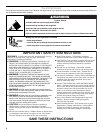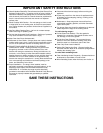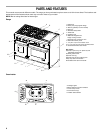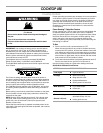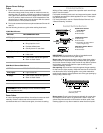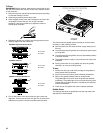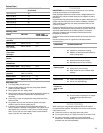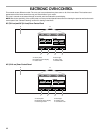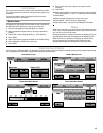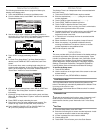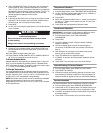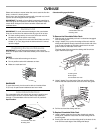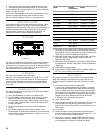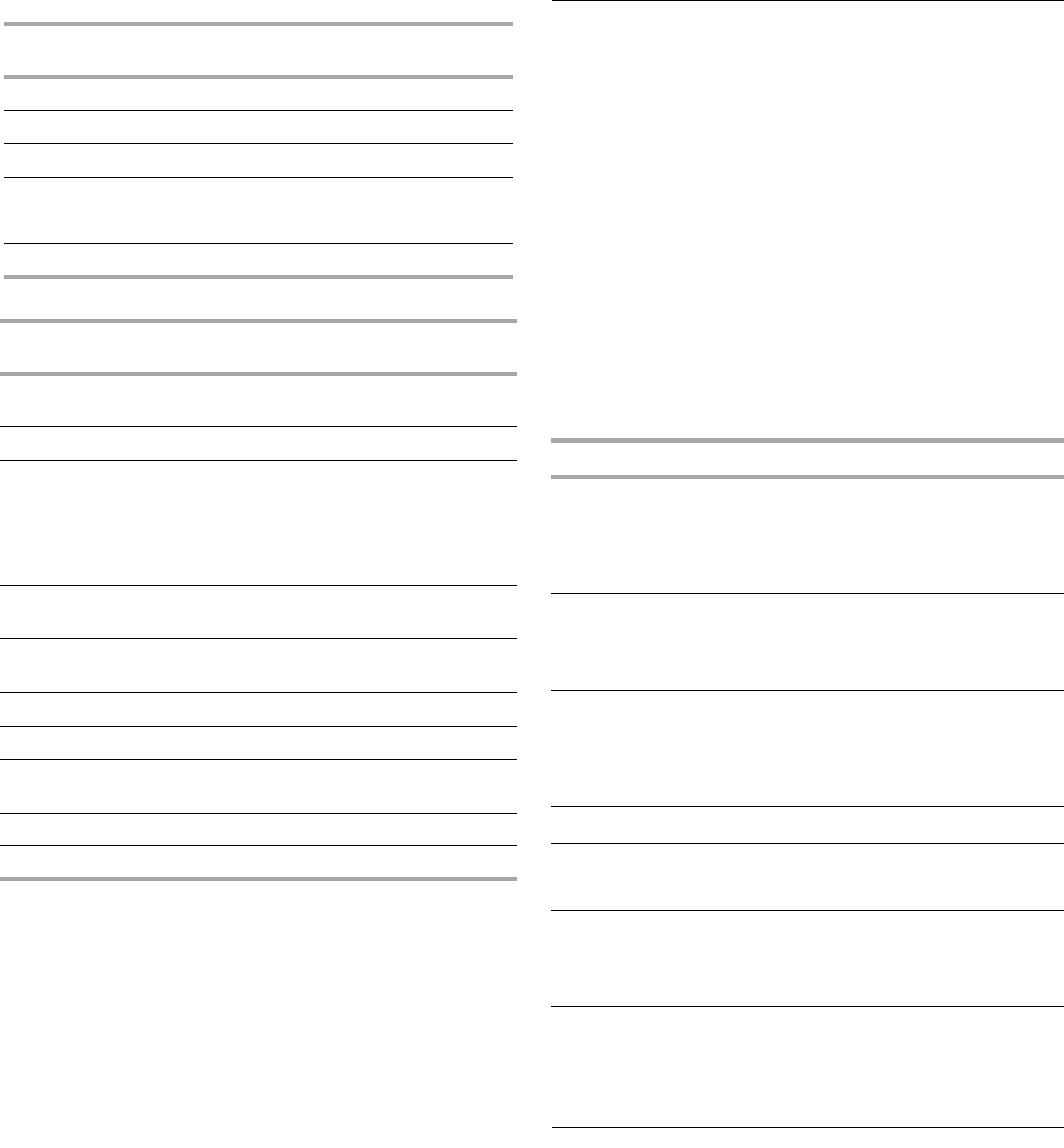
11
Preheat Chart
Cooking Chart
After Each Use:
1. Turn the griddle off and let cool.
2. Scrape griddle residue into drip tray using heat resistant
plastic or wooden utensils.
3. Rinse griddle with hot, soapy water.
4. Remove and clean the drip tray and the area below. Gently tip
the drip tray so that the contents are not spilled when
removing.
5. Clean using a nylon scrub pad with soapy water and rinse
with hot water.
6. Dry griddle, drip tray and area below griddle with paper
towels to remove excess grease and oil.
7. If desired, a final cleaning with diluted white vinegar will
remove stubborn residues on the griddle. Use a nylon scrub
pad dipped into a mixture of 1 tbs (15 mL) of white vinegar
and a ½ cup (118 mL) of hot water. Gently scrub stubborn
spots, rinse with hot water and dry.
Cookware
IMPORTANT: Do not leave empty cookware on a hot surface
cooking area, element or surface burner.
Ideal cookware should have a flat bottom, straight sides and a
well-fitting lid, and the material should be of medium-to-heavy
thickness.
Rough finishes may scratch the cooktop or grates. Aluminum and
copper may be used as a core or base in cookware. However,
when used as a base they can leave permanent marks on the
cooktop or grates.
Cookware material is a factor in how quickly and evenly heat is
transferred, which affects cooking results. A nonstick finish has
the same characteristics as its base material. For example,
aluminum cookware with a nonstick finish will take on the
properties of aluminum.
Cookware with nonstick surfaces should not be used under the
broiler.
Use the following chart as a guide for cookware material
characteristics.
Home Canning
When canning for long periods, alternate the use of surface
burners between batches. This allows time for the most recently
used areas to cool.
■ Center the canner on the grate above the burner.
■ Do not place canner on 2 surface burners at the same time.
■ For more information, contact your local agricultural
department. Companies that manufacture home canning
products can also offer assistance.
TEMPERATURE TIME TO PREHEAT
(in minutes)
250°F (121°C) 10
300°F (149°C) 14
350°F (177°C) 17
400°F (204°C) 20
450°F (232°C) 25
500°F (260°C) 27
FOOD SETTING COOK TIME
TOTAL MINUTES
Sausage patties
and links
325°F (163°C) 12-18
Bacon slices 350°F (177°C) 7-11
Ham steak
(fully cooked)
325°F (163°C) 5-7
Frankfurters and
precooked
sausages
325°F (163°C) 8-15
Ground meat
patties
350°F (177°C) 10-15
Grilled
sandwiches
325°F (163°C) 3-5
Fish steaks, fillets 325°F (163°C) 8-15
Eggs 300°F (149°C) 3-5
Hash brown
potatoes
400°F to 425°F
(204°C to 218°C)
8-12
French toast 350°F (177°C) 5-7
Pancakes 350°F (177°C) 2-4
COOKWARE CHARACTERISTICS
Aluminum
■ Heats quickly and evenly.
■ Suitable for all types of cooking.
■ Medium or heavy thickness is best for
most cooking tasks.
Cast iron
■ Heats slowly and evenly.
■ Good for browning and frying.
■ Maintains heat for slow cooking.
Ceramic or
Ceramic glass
■ Follow manufacturer’s instructions.
■ Heats slowly, but unevenly.
■ Ideal results on low to medium heat
settings.
Copper
■ Heats very quickly and evenly.
Earthenware
■ Follow manufacturer’s instructions.
■ Use on low heat settings.
Porcelain
enamel-on-
steel or cast
iron
■ See stainless steel or cast iron.
Stainless steel
■ Heats quickly, but unevenly.
■ A core or base of aluminum or copper
on stainless steel provides even
heating.




